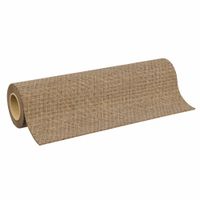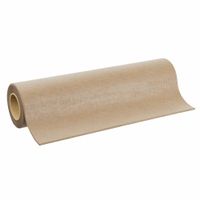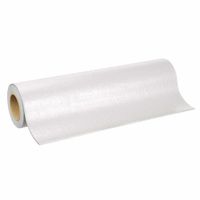Call +(254) 703 030 000 / 751 483 999 / 721 704 777
- Home
- Raw Materials
- Fabrics
.....Read More
Frequently Asked Questions
What are the different types of fabrics used in the textile industry?
The textile industry utilizes a wide array of fabrics, each with unique properties and applications. Here are some of the most common types:
1. **Cotton**: A natural fiber known for its softness, breathability, and absorbency. It's widely used in clothing, home textiles, and medical supplies.
2. **Wool**: Sourced from sheep, wool is valued for its warmth, elasticity, and moisture-wicking properties. It's commonly used in sweaters, suits, and blankets.
3. **Silk**: A luxurious natural fiber produced by silkworms, silk is prized for its smooth texture, sheen, and strength. It's often used in high-end fashion and home décor.
4. **Linen**: Made from flax plants, linen is strong, absorbent, and quick-drying. It's popular for summer clothing and home textiles like tablecloths and napkins.
5. **Polyester**: A synthetic fiber known for its durability, wrinkle resistance, and quick-drying properties. It's used in a wide range of products, from clothing to industrial textiles.
6. **Nylon**: Another synthetic fiber, nylon is strong, elastic, and resistant to abrasion. It's used in activewear, hosiery, and outdoor gear.
7. **Rayon**: A semi-synthetic fiber made from cellulose, rayon is versatile and mimics the feel of natural fibers like cotton and silk. It's used in clothing and home textiles.
8. **Acrylic**: A synthetic fiber that resembles wool, acrylic is lightweight, warm, and resistant to moths. It's used in sweaters, blankets, and outdoor fabrics.
9. **Spandex (Lycra)**: Known for its exceptional elasticity, spandex is often blended with other fibers to provide stretch in garments like activewear and swimwear.
10. **Denim**: A sturdy cotton twill fabric, denim is primarily used in jeans and casual wear.
These fabrics are selected based on their specific characteristics to meet the diverse needs of the textile industry.
What is burlap fabric used for?
Burlap fabric, also known as hessian, is a versatile material with a wide range of uses across various industries. It is made from the jute plant, which is a natural fiber, making it an eco-friendly option. Here are some of its primary uses:
1. **Agriculture**: Burlap is commonly used in agriculture for making sacks to store and transport grains, potatoes, and other produce. Its breathable nature helps in maintaining the freshness of the contents. It is also used for erosion control and as a protective covering for plants during harsh weather conditions.
2. **Gardening**: In gardening, burlap is used for root balling, which involves wrapping the roots of trees and shrubs to protect them during transportation. It is also used as a weed barrier and for making composting bags.
3. **Home Décor**: Burlap's rustic appearance makes it popular in home décor. It is used for making curtains, table runners, and decorative wall hangings. Burlap is also used in crafting projects, such as wreaths and banners.
4. **Upholstery and Furniture**: Burlap is used in upholstery as a backing material for furniture. It provides support and structure to cushions and other upholstered items.
5. **Construction**: In construction, burlap is used for curing concrete. It is laid over freshly poured concrete to retain moisture and ensure proper curing. It is also used for sandbags in flood control.
6. **Fashion and Accessories**: Burlap is used in the fashion industry for making bags, hats, and shoes. Its natural texture and durability make it a popular choice for eco-friendly fashion items.
7. **Crafts and DIY Projects**: Burlap is a favorite material for DIY enthusiasts. It is used in a variety of crafts, including scrapbooking, gift wrapping, and making rustic wedding decorations.
Overall, burlap's durability, breathability, and natural appeal make it a valuable material in numerous applications.
How is PTFE-coated fiberglass fabric made?
PTFE-coated fiberglass fabric is made through a multi-step process that involves the integration of fiberglass and polytetrafluoroethylene (PTFE) to create a durable, high-performance material.
1. **Fiberglass Fabric Production**: The process begins with the production of fiberglass fabric. This involves melting raw materials like silica sand, soda ash, and limestone to form glass. The molten glass is then extruded through fine nozzles to create thin fibers. These fibers are woven into a fabric using looms, resulting in a flexible and strong base material.
2. **Surface Preparation**: The woven fiberglass fabric undergoes surface preparation to enhance adhesion. This may involve cleaning and applying a primer to ensure the PTFE coating adheres properly.
3. **PTFE Dispersion**: PTFE, a fluoropolymer known for its non-stick and heat-resistant properties, is prepared in a liquid dispersion form. This dispersion is applied to the fiberglass fabric through various methods such as dipping, spraying, or knife coating.
4. **Coating Process**: The PTFE dispersion is evenly applied to the fiberglass fabric. The fabric is then passed through a series of rollers to ensure uniform coating and to remove excess PTFE.
5. **Curing**: The coated fabric is subjected to a high-temperature curing process. This step is crucial as it causes the PTFE to sinter, forming a solid, continuous coating that bonds with the fiberglass. The curing temperature and time are carefully controlled to achieve optimal properties.
6. **Quality Control**: The final PTFE-coated fiberglass fabric undergoes rigorous quality control checks to ensure it meets specified standards for thickness, adhesion, and performance characteristics.
The result is a composite material that combines the strength and flexibility of fiberglass with the chemical resistance and non-stick properties of PTFE, making it suitable for various industrial applications.
What are the benefits of using silicone-coated fiberglass fabric?
Silicone-coated fiberglass fabric offers several benefits, making it a versatile material for various applications. Firstly, it provides excellent thermal resistance, capable of withstanding temperatures ranging from -50°C to 260°C, making it ideal for high-temperature environments. This property ensures durability and longevity in applications such as insulation, welding blankets, and fire curtains.
Secondly, the silicone coating enhances the fabric's chemical resistance, protecting it from exposure to oils, solvents, and other corrosive substances. This makes it suitable for use in chemical plants and other industrial settings where exposure to harsh chemicals is common.
The fabric is also highly flexible and durable, allowing it to maintain its integrity under mechanical stress and repeated use. This flexibility makes it easy to handle and install, reducing labor costs and time in applications like ducting and expansion joints.
Additionally, silicone-coated fiberglass fabric is water-resistant and weatherproof, providing protection against moisture and environmental elements. This makes it an excellent choice for outdoor applications, such as protective covers and tarpaulins.
The material also offers electrical insulation properties, making it useful in electrical applications where insulation is critical. Its non-toxic and environmentally friendly nature further adds to its appeal, ensuring safety and compliance with environmental regulations.
Finally, silicone-coated fiberglass fabric is available in various thicknesses and colors, allowing for customization to meet specific application requirements. This versatility, combined with its robust performance characteristics, makes it a preferred choice across industries such as aerospace, automotive, construction, and marine.
How does burlap fabric compare to other natural fibers?
Burlap, made from jute plant fibers, is a coarse, strong fabric known for its durability and biodegradability. Compared to other natural fibers like cotton, linen, hemp, and wool, burlap stands out for its robustness and eco-friendliness.
Cotton is soft, breathable, and widely used in clothing, but it requires significant water and pesticide use, making it less sustainable than burlap. Linen, derived from flax, is also breathable and stronger than cotton, but its production is labor-intensive and more expensive. Burlap, in contrast, is cost-effective and requires minimal resources to grow, making it a more sustainable option.
Hemp shares burlap's environmental benefits, being fast-growing and requiring little water or pesticides. Both are strong and durable, but hemp is softer and more versatile, suitable for a wider range of applications, including textiles and composites. Burlap's rough texture limits its use primarily to sacks, upholstery, and gardening.
Wool, sourced from sheep, is a natural insulator and moisture-wicking, ideal for clothing and home textiles. However, wool production involves animal husbandry, which has environmental and ethical considerations. Burlap, being plant-based, avoids these issues and is fully biodegradable.
In summary, burlap is a sustainable, durable fabric with specific uses, particularly in packaging and agriculture. While it lacks the softness and versatility of fibers like cotton, linen, and hemp, its environmental benefits and cost-effectiveness make it a valuable material in applications where texture and comfort are less critical.
What are the applications of PTFE-coated fiberglass fabric?
PTFE-coated fiberglass fabric is a versatile material with numerous applications across various industries due to its unique properties such as high temperature resistance, non-stick surface, chemical inertness, and durability. Here are some of its key applications:
1. **Industrial Belting**: Used in conveyor belts for food processing, textiles, and packaging industries due to its non-stick surface and ability to withstand high temperatures.
2. **Architectural Membranes**: Employed in tensile structures, roofing, and canopies for its durability, weather resistance, and aesthetic appeal.
3. **Release Sheets**: Utilized in the manufacturing of composite materials and rubber curing processes to prevent sticking and ensure smooth release.
4. **Heat Sealing**: Applied in heat sealing machines for packaging to provide a non-stick surface that can endure high temperatures.
5. **Electrical Insulation**: Used in the electronics industry for insulation due to its excellent dielectric properties and resistance to heat and chemicals.
6. **Gaskets and Seals**: Employed in chemical processing and other industries for its chemical resistance and ability to maintain integrity under pressure and temperature variations.
7. **Printing and Textile Drying**: Used in drying and curing processes in the textile and printing industries due to its heat resistance and non-stick properties.
8. **Solar Panel Manufacturing**: Utilized as a release sheet in the lamination process of solar panels to ensure smooth and efficient production.
9. **Food Processing**: Used in baking sheets, conveyor belts, and other applications where non-stick and food-safe properties are essential.
10. **Aerospace and Automotive**: Applied in various components for its lightweight, high strength, and resistance to extreme environmental conditions.
These applications leverage the material's ability to perform under challenging conditions, making PTFE-coated fiberglass fabric a critical component in many industrial and commercial processes.
How do you care for and clean burlap fabric?
To care for and clean burlap fabric, follow these steps:
1. **Shake and Dust**: Begin by shaking the burlap outdoors to remove loose dirt and debris. Use a soft brush or vacuum with a brush attachment to remove dust.
2. **Spot Cleaning**: For small stains, use a mild detergent mixed with water. Dab the solution onto the stain with a clean cloth, then blot with a dry cloth. Avoid rubbing, as this can damage the fibers.
3. **Hand Washing**: Fill a basin with cold water and add a small amount of mild detergent. Submerge the burlap and gently agitate it. Avoid wringing or twisting to prevent stretching.
4. **Rinsing**: Rinse thoroughly with cold water to remove all soap residues. Ensure all detergent is washed out to prevent stiffness.
5. **Drying**: Lay the burlap flat on a clean, dry towel. Roll the towel with the burlap inside to remove excess water. Unroll and lay flat to air dry, away from direct sunlight to prevent fading.
6. **Ironing**: If needed, iron the burlap on a low setting while it is still slightly damp. Use a pressing cloth to protect the fabric.
7. **Storage**: Store burlap in a cool, dry place. Avoid folding to prevent creases; instead, roll it loosely.
8. **Avoid Machine Washing**: Machine washing can fray the edges and weaken the fabric. Always opt for hand washing.
9. **Preventing Odors**: To keep burlap fresh, sprinkle baking soda on it, let it sit for a few hours, then shake it out.
10. **Handling**: Handle with care to avoid snags and tears, as burlap is a loosely woven fabric.
By following these steps, you can maintain the integrity and appearance of burlap fabric.
What industries commonly use silicone-coated fiberglass fabric?
Silicone-coated fiberglass fabric is widely used across various industries due to its unique properties such as high-temperature resistance, flexibility, durability, and chemical resistance. Here are some of the key industries that commonly utilize this material:
1. **Aerospace Industry**: Used for thermal insulation, fire protection, and as a component in aircraft interiors due to its lightweight and flame-retardant properties.
2. **Automotive Industry**: Employed in heat shields, exhaust wraps, and as protective covers for cables and hoses, providing thermal insulation and protection against high temperatures.
3. **Construction Industry**: Utilized in roofing materials, expansion joints, and as a protective layer for building facades, offering weather resistance and durability.
4. **Marine Industry**: Applied in the construction of boat covers, sails, and as insulation for engine compartments, benefiting from its resistance to saltwater and UV radiation.
5. **Industrial Manufacturing**: Used in conveyor belts, welding blankets, and protective curtains, providing heat resistance and protection from sparks and molten metal.
6. **Power Generation**: Employed in insulation for turbines, boilers, and other high-temperature equipment, ensuring energy efficiency and safety.
7. **Chemical Processing**: Utilized in protective clothing, gaskets, and seals, offering resistance to chemicals and high temperatures.
8. **Food Processing**: Used in conveyor belts and baking sheets, benefiting from its non-stick properties and ability to withstand high temperatures.
9. **Textile Industry**: Applied in the production of fire-retardant fabrics and protective clothing, providing safety and durability.
10. **Electronics Industry**: Used as insulation for wires and cables, offering protection against heat and electrical interference.
These industries leverage the material's versatility and performance characteristics to enhance safety, efficiency, and longevity in their applications.
What are the properties of PTFE-coated fiberglass fabric?
PTFE-coated fiberglass fabric is known for its unique combination of properties that make it suitable for various industrial applications. These properties include:
1. **High Temperature Resistance**: It can withstand temperatures ranging from -73°C to 260°C (-100°F to 500°F), making it ideal for high-temperature applications.
2. **Non-Stick Surface**: The PTFE coating provides a non-stick surface, preventing adhesion of materials and facilitating easy cleaning.
3. **Chemical Resistance**: It is resistant to most chemicals, including acids, bases, and solvents, which makes it suitable for use in harsh chemical environments.
4. **Low Friction**: The PTFE surface has a low coefficient of friction, which reduces wear and tear and enhances the lifespan of the fabric.
5. **Electrical Insulation**: It offers excellent electrical insulation properties, making it useful in electrical and electronic applications.
6. **Dimensional Stability**: The fiberglass base provides dimensional stability, ensuring the fabric maintains its shape and size under stress and temperature variations.
7. **UV and Weather Resistance**: It is resistant to UV radiation and weathering, making it suitable for outdoor applications.
8. **High Tensile Strength**: The fiberglass reinforcement provides high tensile strength, enhancing the durability and mechanical performance of the fabric.
9. **Moisture Resistance**: The PTFE coating is hydrophobic, preventing moisture absorption and making the fabric suitable for use in humid environments.
10. **Flame Resistance**: It is inherently flame-resistant, which is crucial for applications requiring fire safety.
11. **Lightweight**: Despite its strength and durability, the fabric is lightweight, which is advantageous for applications where weight is a concern.
These properties make PTFE-coated fiberglass fabric a versatile material used in industries such as aerospace, automotive, food processing, and electronics.
How does silicone-coated fiberglass fabric resist high temperatures?
Silicone-coated fiberglass fabric resists high temperatures due to the combined properties of both the fiberglass and the silicone coating. Fiberglass is inherently heat-resistant, as it is made from fine fibers of glass that can withstand temperatures up to approximately 1000°F (538°C) without melting. This makes it an excellent base material for high-temperature applications.
The silicone coating enhances the heat resistance of the fiberglass fabric. Silicone is a synthetic polymer known for its thermal stability, capable of withstanding temperatures ranging from -76°F to 500°F (-60°C to 260°C). When applied to fiberglass, the silicone coating provides a protective layer that not only increases the fabric's resistance to heat but also offers additional benefits such as water repellency, chemical resistance, and improved flexibility.
The silicone coating acts as a barrier, protecting the fiberglass from direct exposure to flames and high temperatures. It also helps in dissipating heat more evenly across the fabric, reducing the risk of localized thermal damage. Furthermore, the coating can prevent the release of glass fibers, which can occur at high temperatures, thus maintaining the structural integrity of the fabric.
In summary, the combination of fiberglass's inherent heat resistance and the protective, heat-dissipating properties of the silicone coating allows silicone-coated fiberglass fabric to effectively resist high temperatures, making it suitable for applications such as fire curtains, welding blankets, and thermal insulation.


